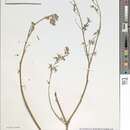mk
имиња во трошки


Philenoptera laxiflora, synonym Lonchocarpus laxiflorus, is a species of legume in the family Fabaceae.[1] The tree grows to 4–8 meters in height, has grey or yellowish bark and compound leaves. New leaves are accompanied by purple flowers on multi-branched panicles. The fruit is a glabrous papery pod, usually containing one seed. Ph. laxiflorus is widely distributed in West Africa, Central Africa, the African Great Lakes, and Northeast Africa. It is found in savanna woodlands and dry forested areas, particularly fringing forest near water courses.[2]
Ph. laxiflorus is used across its range for traditional medicine. These uses include:
Other uses of Ph. laxiflorus include applying a lotion with a decoction to the skin to treat venereal disease, constipation in children, skin diseases, sterility (insufficient semen).[2]
Ph. laxiflorus has been little studied, though many species in the related genus Lonchocarpus contain rotenoids, tannins, flavonoids, and isoflavonoids. One study extracted several new compounds from the bark: two isoflavanes (lonchocarpane and laxiflorane) and two pterocarpanes (philonopterane and 9-O-methyl derivative).[2]
Nothing specific is known about the toxicology of Ph. laxiflorus.[2]
Philenoptera laxiflora, synonym Lonchocarpus laxiflorus, is a species of legume in the family Fabaceae. The tree grows to 4–8 meters in height, has grey or yellowish bark and compound leaves. New leaves are accompanied by purple flowers on multi-branched panicles. The fruit is a glabrous papery pod, usually containing one seed. Ph. laxiflorus is widely distributed in West Africa, Central Africa, the African Great Lakes, and Northeast Africa. It is found in savanna woodlands and dry forested areas, particularly fringing forest near water courses.
Lonchocarpus laxiflorus là một loài thực vật có hoa trong họ Đậu. Loài này được Guill. & Perr. miêu tả khoa học đầu tiên.[1]
Lonchocarpus laxiflorus là một loài thực vật có hoa trong họ Đậu. Loài này được Guill. & Perr. miêu tả khoa học đầu tiên.